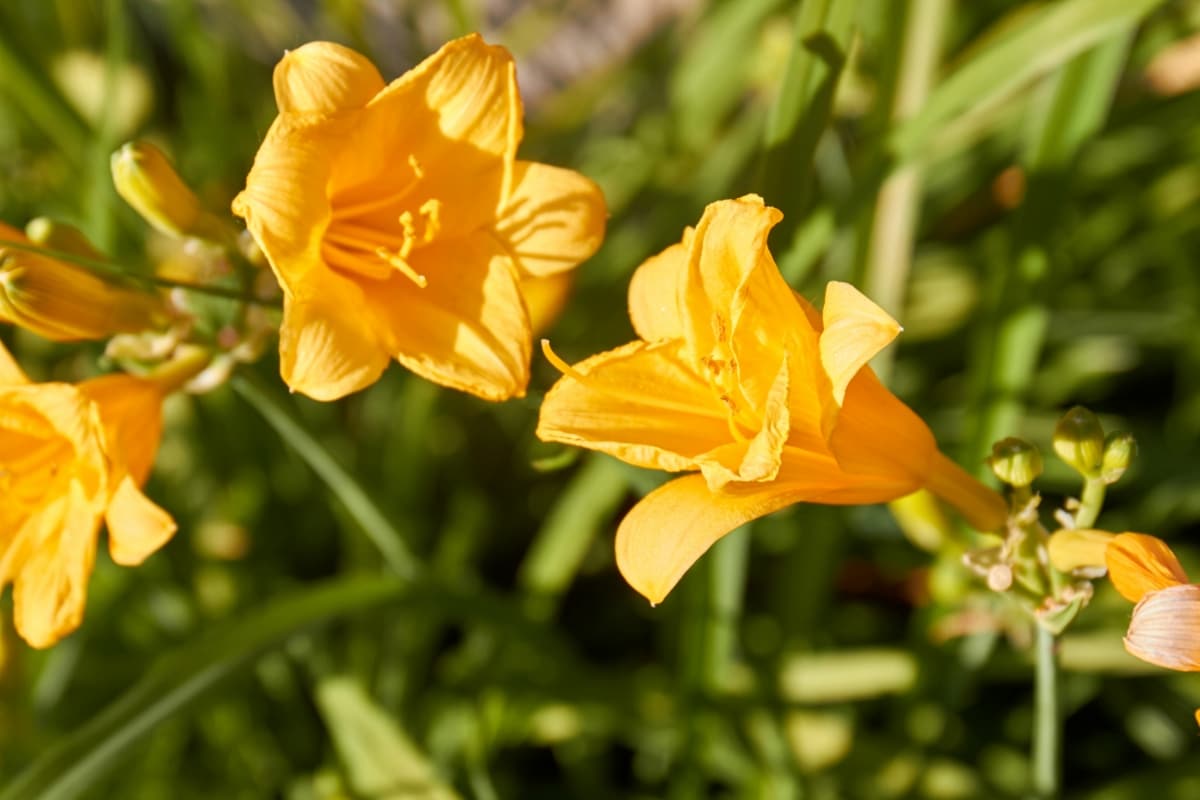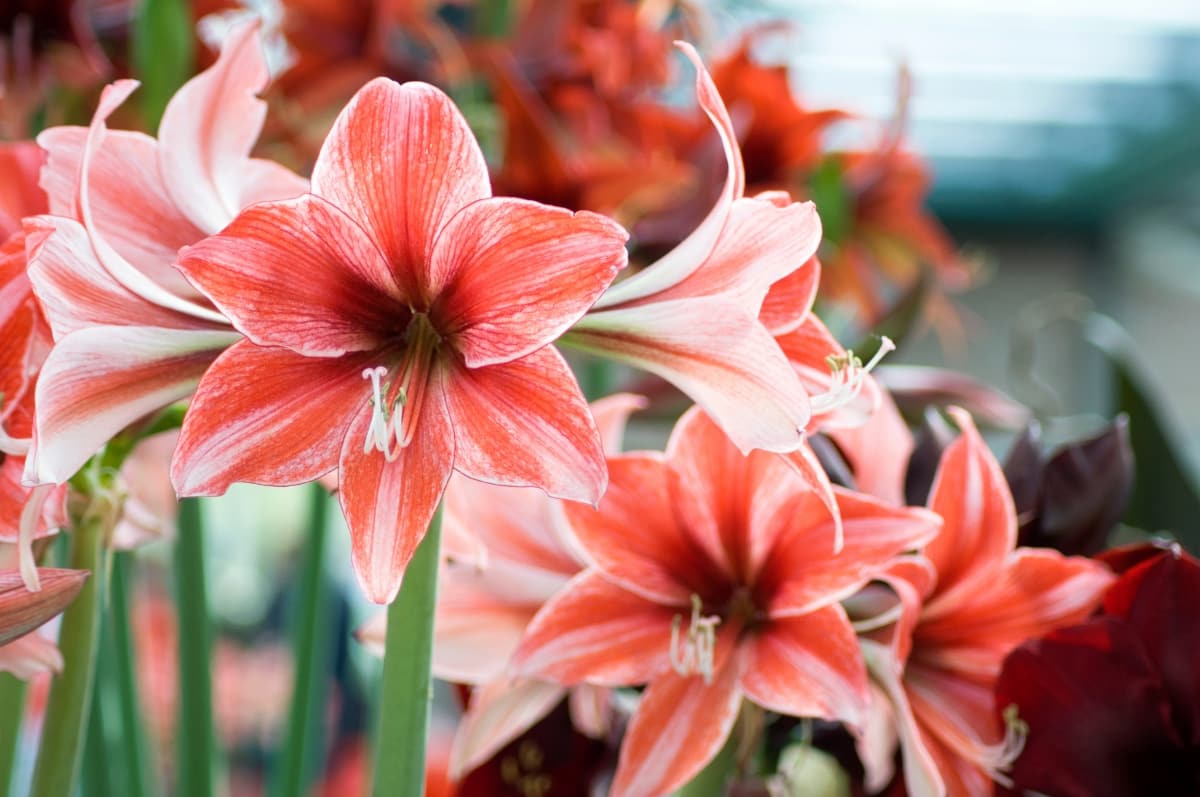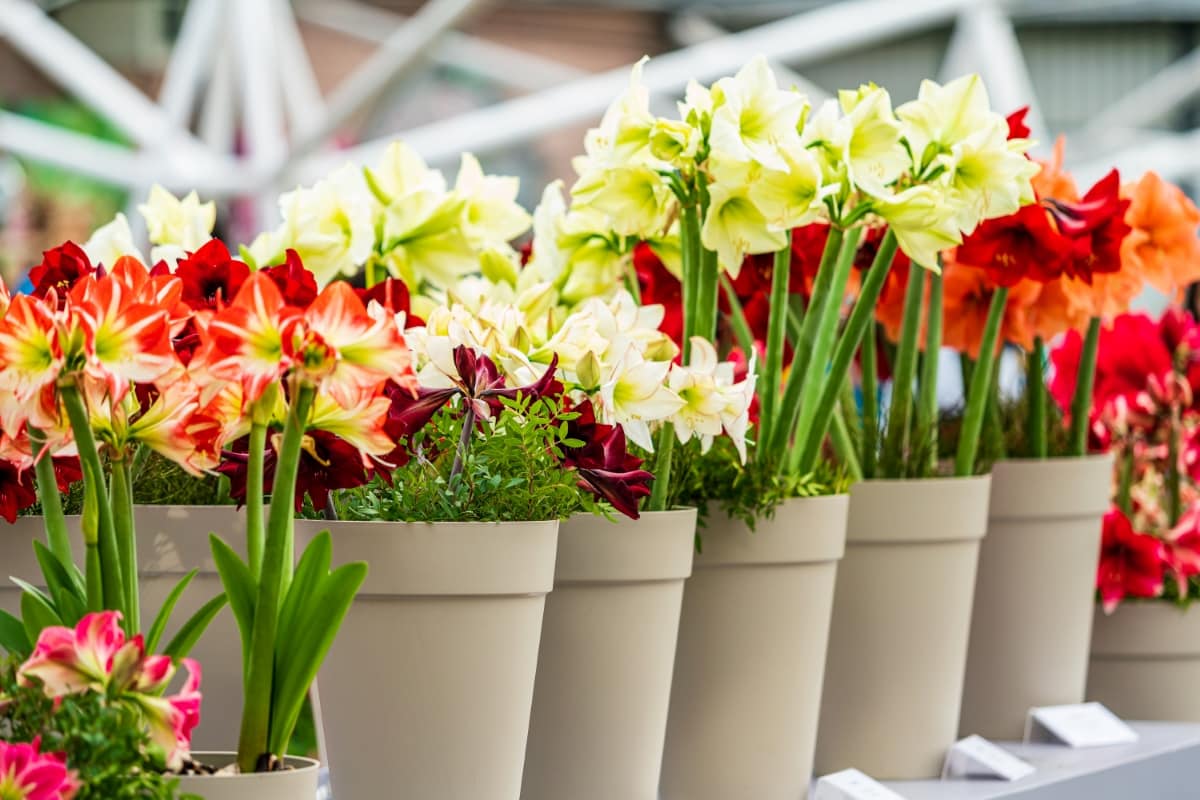Controlling Amaryllis pests is essential for keeping these beautiful flowers healthy. In this blog, we’ll delve into effective, natural, and organic treatments to eliminate these pesky intruders. Discover simple yet powerful methods to safeguard your Amaryllis, ensuring their vibrant blooms stay unharmed. From insect infestations to fungal issues, we’ve got you covered with science-backed solutions that don’t rely on artificial interventions.

How to Control Amaryllis Pests Naturally
What is Amaryllis?
Amaryllis, scientifically known as Hippeastrum, is a striking flowering bulb prized for its beauty. These bulbs thrive in various settings, whether in gardens, flower beds, or potted arrangements. Amaryllis comes in a diverse palette of colors, including white, pink, red, and captivating combinations. These elegant plants can grow up to 2 feet in height and produce as many as six flowers on a single stalk, creating a stunning display.
What’s particularly fascinating is the durability of Amaryllis; some individuals have witnessed them flowering for up to an astonishing 75 years. However, despite their resilience, Amaryllis can still fall prey to troublesome pests that can harm the plant’s health and aesthetics.
Understanding Amaryllis Pests: Identifying Common Pests and Their Damage
Caterpillars are one of the notorious culprits. When you spot chewed leaves on your Amaryllis, it’s a sign that these pests have paid a visit. They usually strike between June and August, consuming all the leaves within a matter of days. Manually removing caterpillars can work if the infestation is minor. For a more comprehensive solution, consider applying 0.02 percent endosulfan, 0.02 percent cypermethrin, or 0.02 percent parathion, which should rid your garden of caterpillars within two days.
Thrips, also known as thunder flies, are cigar-shaped insects that can sap the vitality of your Amaryllis. They feed on leaves, stalks, and flowers and are often responsible for your Amaryllis failing to bloom. Controlling thrips involves applying a weekly dust coating containing chlordane or dieldrin. Alternatively, you can use 0.02 percent endosulfan or a 0.05 percent solution of dimethoate to eliminate these tiny pests.
Aphids are another nuisance. These tiny insects come in various colors and reproduce rapidly. They feed on your Amaryllis by sucking sap from the leaves. Aphids also produce sticky material called honeydew, which can coat your plant’s leaves and stems. Regularly inspect your plant for aphids, especially the undersides of leaves, and dislodge them by spraying the plant with a hose. To kill aphids, use a solution of 2 tsp dish soap and one qt. Lukewarm water removes their protective coating, causing them to die of dehydration.
Spider Mites are tiny arachnids that cause tissue damage by sucking sap from Amaryllis flowers. They are often red, brown, yellow, or green and create protective webs on the plant. Infested leaves develop brown flecks, discolor, and may fall off, potentially leading to the death of the Amaryllis. While spider mites are challenging to control, specific pesticides like propargite (omite) at a 0.01 percent concentration can be effective when used regularly.
Prevention is Key: Implementing Effective Strategies to Control Amaryllis Pests
Amaryllis are beautiful flowering bulbs that brighten any garden or indoor space. Prone to pests that can damage their leaves, stems, flowers, and bulbs. To prevent these pests from ruining your Amaryllis, you must implement effective strategies to deter, repel, or eliminate them.
In case you missed it: How to Control Garlic Pests Naturally: How to Get Rid of Them with Natural and Organic Treatment

Natural Remedies for Amaryllis Pest Control: Harnessing the Power of Companion Planting
One of the easiest and most natural ways to control amaryllis pests is to use companion planting. Companion plants have beneficial effects on each other, such as attracting pollinators, repelling pests, improving soil quality, or enhancing growth. For Amaryllis, some of the best companion plants are garlic, onion, chives, marigold, nasturtium, and mint. These plants can help ward off common amaryllis pests such as aphids, thrips, spider mites, and bulb mites. Plant them near or around your Amaryllis to create a protective barrier.
Organic Treatments for Amaryllis Pests: Utilizing Safe and Environmentally Friendly Solutions
If you notice any damage signs of pest infestation on your Amaryllis, such as holes, spots, webs, or sticky material on the leaves or flowers, you must act fast and treat them with organic solutions. Organic treatments are safe and environmentally friendly alternatives to chemical pesticides that can harm your plants, soil, wildlife, and health. Some of the most effective organic treatments for amaryllis pests are neem oil, insecticidal soap, horticultural oil, and diatomaceous earth. These products can kill or repel pests without harming your plants or beneficial insects.
Creating a Healthy Garden Ecosystem: Attracting Beneficial Insects to Combat Amaryllis Pests
Beneficial insects are insects that prey on or parasitize pest insects, such as ladybugs, lacewings, hoverflies, parasitic wasps, and predatory mites. These insects can help reduce the population of amaryllis pests and keep them in check. To attract beneficial insects to your garden, you must provide them with food, water, and shelter. You can do this by planting various flowers, herbs, and shrubs that offer nectar, pollen, and foliage for them to feed on and hide in.
Homemade Pest Repellents: DIY Recipes to Deter Amaryllis Pests Naturally
Homemade pest repellents are easy and cheap to make and can deter amaryllis pests with their smell, taste, or texture. Some of the most popular homemade pest repellents are garlic spray, hot pepper spray, vinegar spray, and coffee grounds. You can apply these repellents directly on your amaryllis plants or around them to discourage pests from approaching.
Physical Barriers and Traps: Physical Methods to Keep Amaryllis Pests at Bay
Physical barriers and traps are simple and effective methods that can block, capture, or kill pests without using any chemicals or substances. The most common physical barriers and traps for amaryllis pests are row covers, netting, collars, sticky traps, and yellow traps. You can use these devices to cover your plants, protect the bulbs, trap the flying or crawling pests, or lure them away from your plants.
In case you missed it: How to Control Dahlia Pests Naturally: How to Get Rid of Them with Natural and Organic Treatment

Soil Management Techniques: Enhancing Soil Health to Reduce Amaryllis Pest Infestations
One of the most critical factors that affect the health and resistance of your amaryllis plants is the soil quality. Healthy soil can give plants adequate nutrients, moisture, and oxygen to boost their growth and immunity. Healthy soil can also suppress pest populations by supporting beneficial microorganisms that compete with or antagonize pest organisms. To enhance soil health and reduce amaryllis pest infestations, you must practice good soil management techniques such as adding organic matter, mulching, rotating crops, and avoiding compaction.
Proper Watering and Fertilization Practices: Maintaining Vigorous Amaryllis to Resist Pests
Finally, one of the simplest and most effective ways to control amaryllis pests is to maintain vigorous amaryllis plants that can resist pest attacks. Vigorous plants have strong stems, leaves, flowers, and bulbs that can withstand minor damage and recover quickly. Hardy plants also have natural defenses to deter or repel pests with their chemicals, hairs, or waxes. To maintain vigorous amaryllis plants, you must provide them with proper watering and fertilization practices that suit their needs and preferences.
Integrated Pest Management (IPM) for Amaryllis: A Holistic Approach to Pest Control
However, the best way to achieve long-term and sustainable pest control is to use an integrated pest management (IPM) approach that holistically combines different methods and strategies. IPM is a pest control philosophy that aims to reduce pest damage and environmental impact using a combination of cultural, biological, physical, and chemical methods that are compatible and complementary. By using IPM for Amaryllis, you can achieve optimal pest control results with minimal costs and risks.
Amaryllis Pest Control with Natural and Organic Treatment
| Pest | Damage | Management |
| Caterpillars | Chewed leaves | Manual removal or 0.02% endosulfan |
| Thrips | Fails to bloom, sap depletion | Dust coating with chlordane or dimethoate |
| Aphids | Sap depletion, honeydew production | Hose dislodging or soapy water solution |
| Spider Mites | Tissue damage, web creation | Insecticidal soaps or propargite spray |
In case you missed it: How to Control Petunia Pests Naturally: How to Get Rid of Them with Natural and Organic Treatment

Conclusion
Safeguarding your Amaryllis from pests is essential to maintain their beauty and vitality. Utilizing natural and organic treatments provides effective, eco-friendly solutions to combat common intruders, ensuring the longevity and vibrancy of these beloved flowering bulbs.
- Deworming Schedule for Dogs/Puppies: A Beginners Guide
- How to Prevent and Control Parasites in Goats
- Beneficial Insects in Pest Management
- Natural Solutions for Pest Control in Flower Gardens
- Types of Fungicides Used in Agriculture
- Common Issues in the Fruit Development Stage of Pomegranate Farming
- Fruit Development Issues in Papaya: Easy Solutions and Treatment
- Soil-Borne Diseases and How to Protect Your Plants
- Practices to Prevent Disease Spread in the Garden